Super Mario Bros. Wonder Review - (New) New Super Mario Bros.
/Even as early as 2022, rumors had abounded about a brand new take on 2D Super Mario Bros., so when Nintendo dropped the trailer for Super Mario Bros. Wonder in the June Nintendo Direct, I was definitely intrigued. While 3D Mario has seen a lot of experimentation and evolution, the 2D platformers have kind of been like cover bands, stuck performing past hits.
Change comes slowly, if at all, to Nintendo, and perhaps the biggest tragedy is that when they are willing to experiment, it’s generally with their smaller franchises (Star Fox, Kid Icarus), so as not to frustrate the large casual audience that demands that Mario play like Mario always has. Then when those games flop, they double-down on the tried-and-true. I point all this out because Super Mario Bros. Wonder was advertised as a total reinvention of 2D Mario, and while indeed there are many new ideas and a lot to recommend it, at its core, Wonder is more an evolution than a revolution, for better and for worse.
Daisy’s Adventures in the Flower Kingdom
Super Mario Bros. Wonder takes place in the Flower Kingdom, where they’re welcomed by the caterpillar-ish Prince Florian, his retinue of Toad-like Poplins, and a host of Talking Flowers, which are funnily enough based upon a real-life hallucinogenic plant. But just as the royalty are rubbing elbows, big ol’ Bowser predictably shows up to rain on their parade. With the power of the terribly-named Royal Seeds, he weirdly merges with Prince Florian’s castle. Rather than kidnapping anyone, Bowser begins to wreak havoc upon the Kingdom. The largest playable cast in Super Mario Bros. history venture forth into the game’s 7-ish Worlds to collect Wonder Seeds and Royal Seeds and restore order to the Kingdom.
Except for the Yoshis and Nabbit, everyone plays the same as in the New Super Mario Bros. games, which means perpetually holding down the dash button, variable-height jumps, wall-jumping, mid-air twirls for extra airtime, and ground pounding. Nabbit and the Yoshis can flutter jump and don’t take enemy damage, but are unable to use power-ups. It’s a fair trade-off, and sure to be perfect for little ones. For the first time ever, Princess Daisy is a playable character in a mainline Mario game.
It’s obvious just from looking at it, but in terms of visual flair, Super Mario Bros. Wonder is easily the slickest-looking 2D Mario game, with gorgeous new character models, animations, and backgrounds. Wonder’s soundtrack is equally excellent. The whimsical music ties in pleasantly with the sound effects to create a finely-crafted experience.
One of the coolest new additions to Super Mario Wonder are Badges, which you’ll equip before each level. You’ll unlock or purchase these optional boons, which can give you additional abilities like jumping higher, passive buffs like increased dash speed, or saving you from falling down pits (once per pit), etc. You can only have one equipped, so I mostly kept the Parachute Cap, which allows you to glide down from a jump, but there’s this amazing vine-shooting ability that allows you to hookshot onto walls. The game features Badge Challenges to test your mastery of the movement abilities. Players averse to exploration might enjoy the Sensor Badge, which provides visual cues whenever you’re near a collectible Coin or Wonder Seed and basically trivializes the challenge of finding out all of the game’s already easy-to-find secrets.
Wacky Wonderland Antics, Lackluster Levels
Super Mario Wonder boasts four power-ups - the heavily-advertised elephant form that can shoot water and knock enemies upside the head, the drill suit that can burrow in both ceilings and floors and attack in both vertical directions, a bubble suit that shoots out bubbles you can use for jumping, trapping enemies, or acquiring items, and the classic fire suit. While I was missing various series staples, I can appreciate the focused approach, as the game also features KO Arena levels where you’ll pick two power-ups and face off against waves of enemies. I thought the power-ups were a disappointment, unlike the game’s main mechanic.
The Wonder Seeds are not just Super Mario Bros. Wonder’s selling point, they’re one of the freshest and best ideas Nintendo has introduced to Mario in decades. Once in each of the game’s levels, you’ll either stumble upon or have to unearth one of these transformative glowing seeds, and you’ll never know what to expect. The Wonder Seeds fundamentally alter the level.
Mario might turn into a slime dude capable of climbing walls and ceilings. Background elements can become sentient and start moving around. A water level may flip upside down, with water filling up the top half. Or, in perhaps my favorite twist, the level might turn into a top-down 2D game, ala The Legend of Zelda, where you’ll have to walk to dodge various obstacles. The only issue I had with the Wonder Seed segments is that they were often too short – on average, they might be about a quarter or a third of the length of the entire level. I sometimes felt that they ended just when they were getting interesting.
While Super Mario Bros. Wonder was advertised on the strength of its psychedelic level designs, I must sadly report that with the exception of the delightful Wonder Seed segments, I found most levels to be a constant source of déjà vu, which is a shame, because I loved the new power-ups, enemies, obstacles, interactive tulips, Talking Flowers, and upgraded visuals, which add a ton of character to Mario and friends.
Despite all of the visual refinements, I found myself blazing through the levels. In fact, this may be the easiest mainline Mario game ever. Even collecting items is simplified, as you can grab a collectible coin and die without losing it. It got to the point where I felt I was playing the game on autopilot.
I understand this is a controversial opinion, but to me, the Mario series is in many ways a victim of its own success. Video games have evolved a lot since 1985’s Super Mario Bros., which was designed to eat quarters, but not always for the better. Nintendo’s family and casual audiences are its bread and butter, and that includes kids who’ve grown up on iPads and may be new to controllers and precise platformers. There’s no disrespect meant to anyone, but two recent trends I’ve noticed in Nintendo games are a general lack of challenge and a proliferation of bite-sized bits of content over longer gauntlets.
Is This Game Too Easy? Or Am I Too Good at Mario?
I loved Super Mario Odyssey, but YouTube critic Joseph Anderson made some valid points in his video essay on that game regarding its lack of difficulty and insistence on providing nothing more than a collection of self-contained, bite-sized challenges, thus creating a positive feedback loop that provided the illusion of progression in a game that feels and controls perfectly well, but really doesn’t ask much from the player.
But whereas Super Mario Odyssey, like the Galaxy games, got more difficult later on, I personally found Super Mario Bros. Wonder to be an absolute cakewalk from beginning to end. I beat it in two days, I barely used any Badges, I didn’t die to a single boss, and I fully-cleared most levels the first time around, only going back to pick up a missed collectible coin or alternate flagpole. Your mileage may vary, but I was not challenged once throughout Wonder’s main playthrough. To be fair, there is a Special World with ten or so unforgiving 5-Star challenge levels, but these are all optional. I found these challenges to be the best parts of the game by far, but then again I’m also the kind of guy who loved the most difficult and punishing levels of Super Mario 64 and Super Mario Sunshine.
Not everyone plays Mario for the challenge, though, and Wonder is not only an excellent introduction to the franchise for younger fans, but it massively improves the multiplayer experience.
Much-Improved (Not Perfect) Multiplayer Mayhem
I distinctly remember playing four-player New Super Mario Bros. U Deluxe on Switch with my nieces and nephews (their choice) and seeing how heated and frustrated they got whenever someone would mess up or get in each other’s way. I had to calm them down by explaining that the game could have been designed better. It was easy to mess up in those games by either failing to get in a bubble, jumping on or interfering with another player, accidentally grabbing a power-up someone else needed, or straight-up just being in the wrong place at the wrong time.
Super Mario Bros. Wonder addresses most of these local co-op concerns, but there’s room for improvement. Lives are now shared between all players. There’s no jumping on, picking up, or bumping into fellow players, which reduces the overall chaos, but also removes all direct interactivity between onscreen avatars. You won’t die if you disappear offscreen without turning into a bubble, but the game does put an artificial timer on your ghost when you return, and you must move to a surviving player within 5 seconds or lose a life. One item at a time can be stored and summoned by Player 1. However, there’s no way for someone to drop in or out of a level in progress. You’ve gotta go back to the World Map. It’s a commitment.
Wonder also has many online elements, and they’re mostly passively co-operative. First off, in Friend Races, you’ll be able to join your friends in levels they’re currently playing. It’s not true co-op, as you’ll appear to them as a sort of ghostly shadow, but you can offer items and revive them if necessary, and compare results at the end of the level. During normal play, if you’re online, you’ll be able to see other players’ ghostly impressions from past runs. If you die, you’ll turn into a ghost, but can be revived either by other players or their Standees.
Wonder’s Standees are self-standing cut-outs that can be bought in Shops and placed one per level. In a mechanic befitting a Strand-type game (as in, Death Stranding), the Standees will help online players to revive themselves if their ghosts fly to them. Online play spoils each level’s secrets, further blunting the game’s replay value, but the collectible coins and Wonder Seeds are usually super easy to find anyway.
I Can’t Help But Want More
The exciting Wonder Seed mechanic, much-improved visual flair, tightly-polished levels, and charming personality make this game a winner on paper. However, there’s no sugarcoating the fact that despite all it has going for it, Super Mario Wonder is just another gimmick-filled iteration on the Super Mario World formula. While I can appreciate the polish and effort put into the title to make it fun for everyone, I can’t help but feel that it’s too short and too easy, and I thought it an odd decision to only make a dozen truly challenging levels when a good number of Mario fans are experienced gamers. Even just the addition of multiple difficulty modes or a Boss Rush would have softened the blow a little bit.
But while I yearn for a version of this game that was meatier, more challenging, and packed with actually difficult boss battles, I can recognize that kids like my young nieces will fall head-over-heels in love with Super Mario Wonder, because it truly is full of entrancing visual wonder and its simplicity is unlikely to cause household tensions between ambitious older siblings and confused younger ones. Diehard fans of the format will also find a ton to love here. I can only hope that Nintendo builds on Wonder’s fresher elements and provides more variety and challenges for the inevitable sequel.
Verdict: 4/5 (Fantastic)
*We’ve recently changed our review score format from a 10-score rating to a 5-score rating. You can check out the definition of the new review score system on our About Us page.
PROS
Large cast of playable characters
Fun and surprising Wonder Seed mechanic
Eye-popping animations, visual flair, and backgrounds
Multiplayer improvements and welcome online features
CONS
Perhaps the easiest Mario game ever
Over too quickly at under 10 hours (about 20 to unlock everything)
Power-ups are underwhelming
Only a few challenging levels
What I’ve Played
Beat the story, played for a total of 14 hours
150 Wonder Seeds, 20 Badges, 48/144 Standees


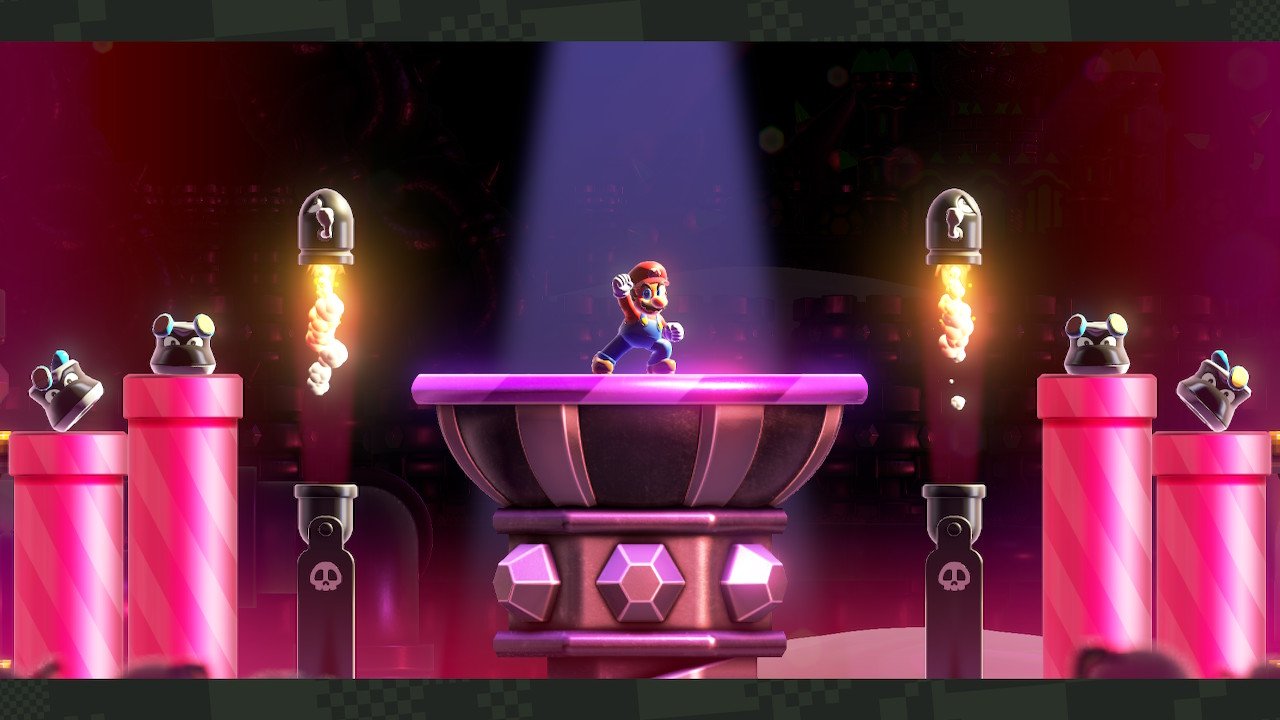
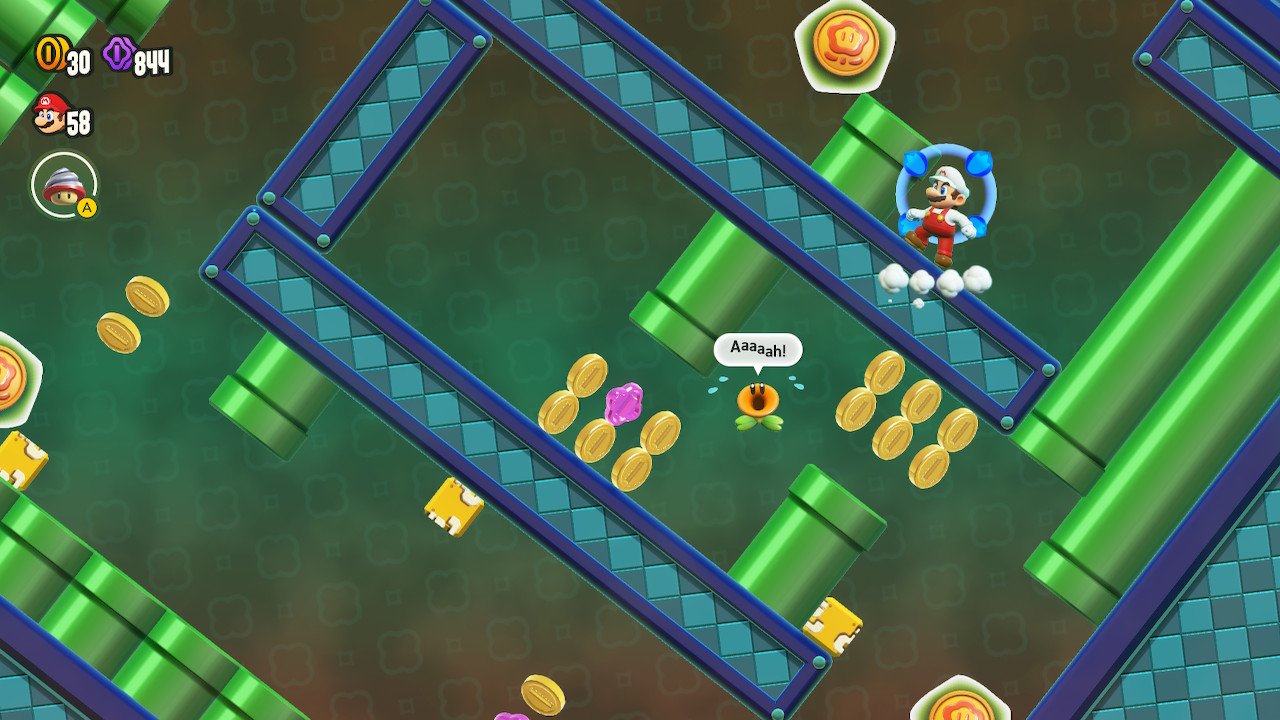

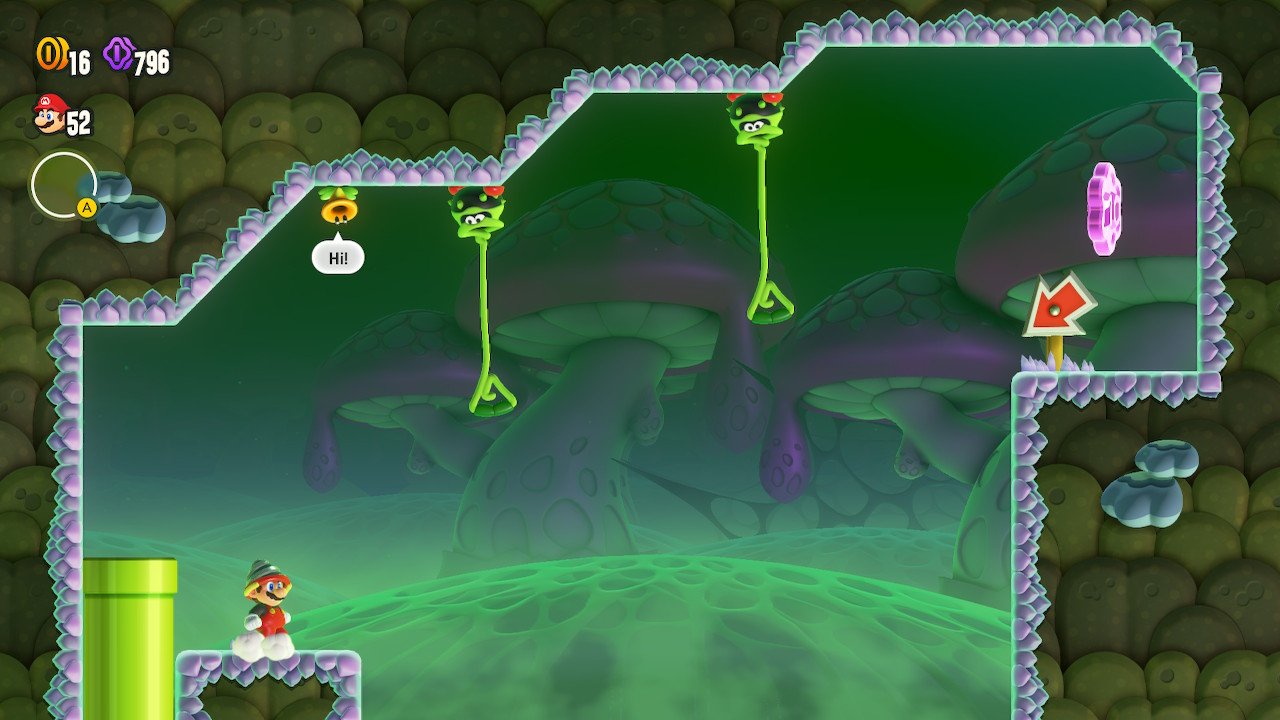
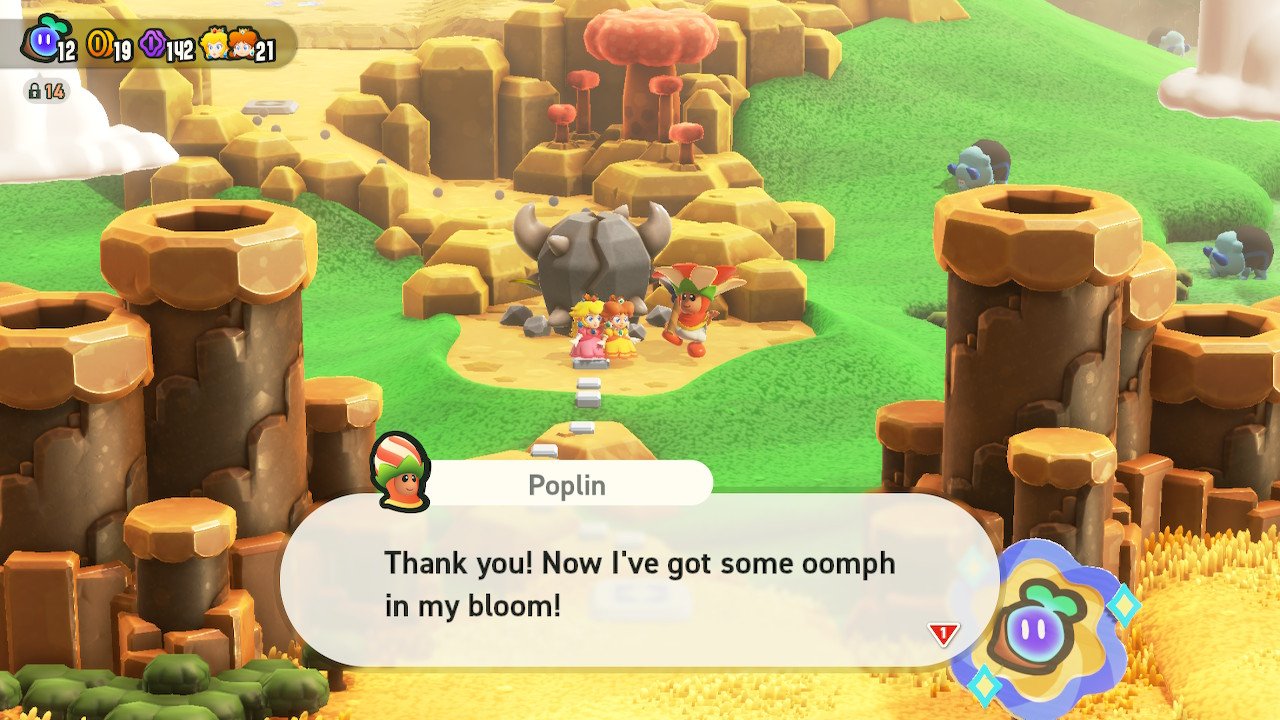

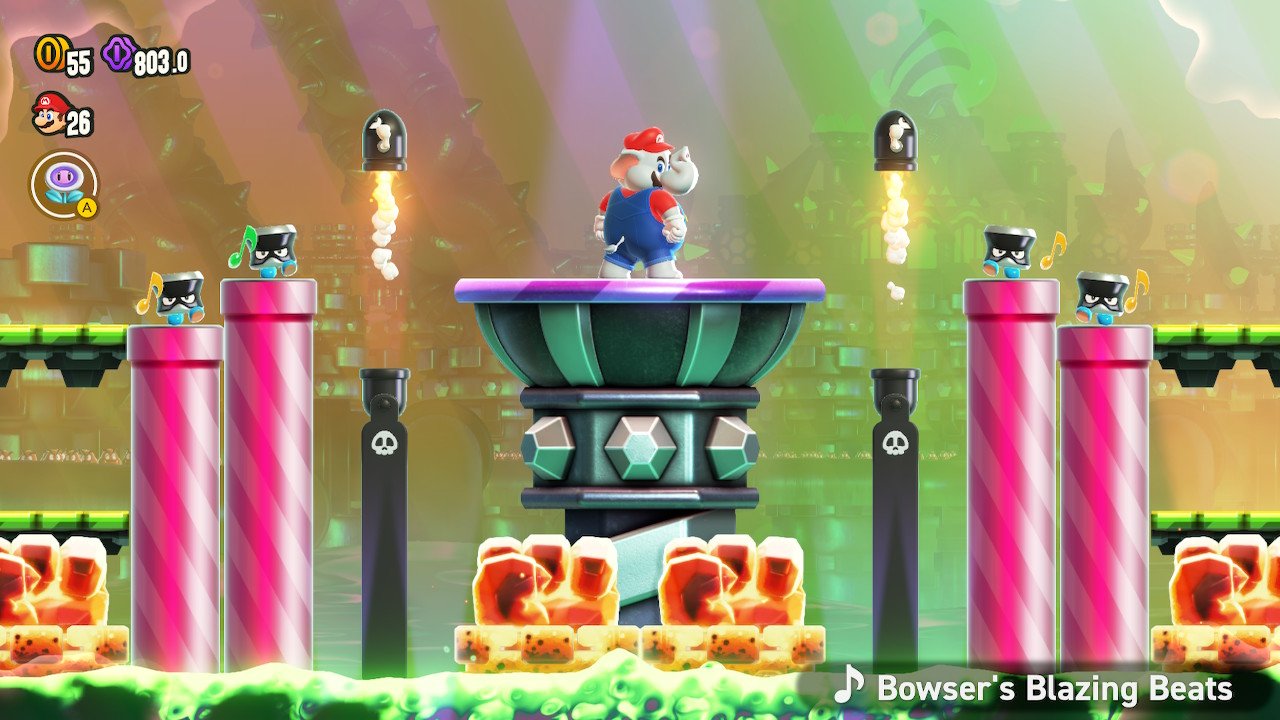



SEGA and Ryu Ga Gotoku Studios put a ton of love and care into Yakuza Kiwami 2, and it runs flawlessly on Switch 2. If you’re like me and itching for a reason to take a plunge into the Yakuza universe, there’s no better time than the present.